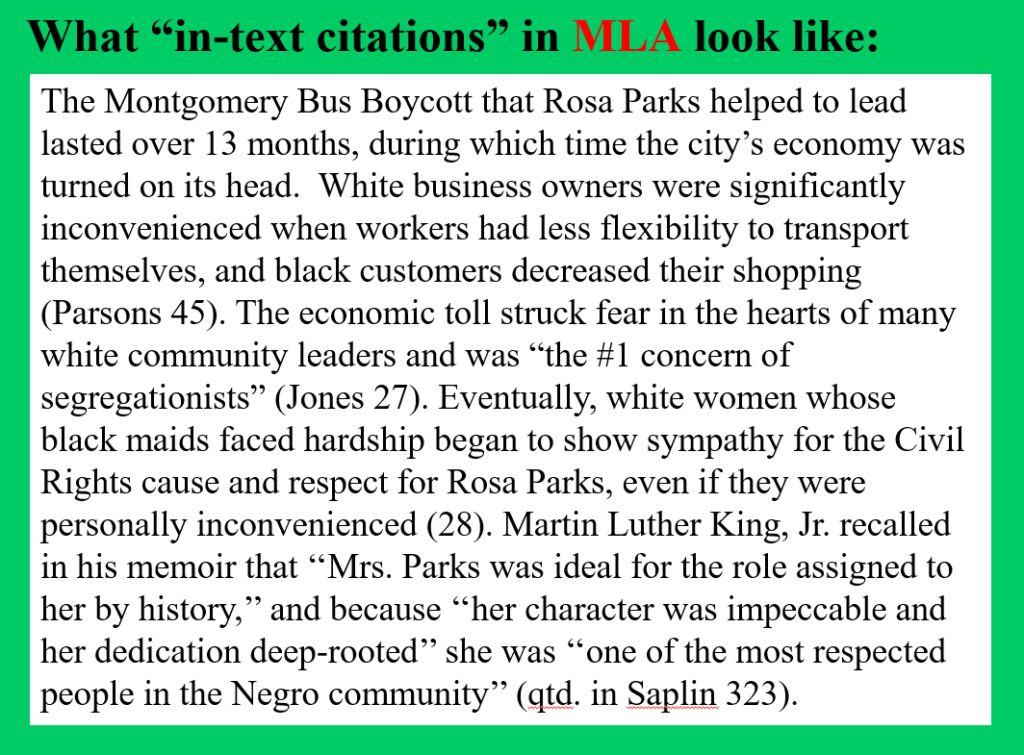Students work hard in middle school and 9th grade to learn a great method of note-taking, develop in-text citations, and compile a proper bibliography so they avoid the serious consequences of plagiarism. Plagiarism is an academic offense that, in educational environments, usually results in an automatic failure on the assignment, even in high school years. (Plagiarism by an author or journalist usually results in firing from job, censure by peers and audiences, and ruin of professional reputation. A plagiarist loses trust and reputation.)
Plagiarism has been committed even if only one of the following is presented by a student or writer, and even if it was not intentional…
- when a scholar uses another person’s work (original idea, data from research or wording) while failing to give proper credit. In high school, “giving proper credit” at the very least means mentioning the source of the idea in the paragraph. But in research papers, the writer provides an “in-text citation” within the body of the paper, and lists a full citation in the paper’s bibliography;
- failing to put the exact wording that is being “borrowed” from source in “Quotation Marks;”
- summarizing or paraphrasing an author’s work without providing an in-text citation;
- presenting a unique and original idea (such as an analogy, simile or metaphor) in one’s work without citing the creator of that idea.
To Avoid Plagiarism:
Record your notes from sources with a sophisticated system that carefully captures the precise page number and source of the idea you are “borrowing.” You can use NoodleTools to gather notes or use a template for NHD in your slide deck if you are a 9th grader in Dan’s classes. Either way, your notes should meet this criteria.
Provide a complete bibliography (called a “Works Cited” list for MLA or “References” list for APA.) But that’s not all!
Integrate “in-text citations” into your paragraphs as you present those ideas/facts/quotes in the paragraphs of your paper. See green box below.
View these examples/instructions for different kinds of in-text citations (also called, parenthetical references) to credit the sources of your information (Using NoodleTools provides you extensive support for presenting your in-text citations in all of their variations.)

 Contact
Contact  Calendars
Calendars Careers
Careers Engage
Engage  District
District
